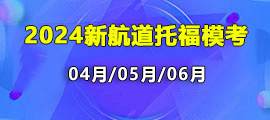托福閱讀TPO50原文+題目(二)
2017/8/17 10:29:37來源:新航道作者:新航道
摘要:上海新航道托福小編為托福考生們準備了托福閱讀TPO50部分原文+題目,希望各位考生們在TPO真題里能夠得到鍛煉,祝廣大托福考生能夠取得理想成績。
上海新航道托福小編為托福考生們準備了托福閱讀TPO50部分原文+題目,希望各位考生們在TPO真題里能夠得到鍛煉,祝廣大托福考生能夠取得理想成績。
托福閱讀TPO50(二)原文+題目:The Plow and the Horse in Medieval Europe
One of the most important factors driving Europe slow emergence from the economic stagnation of the Early Middle Ages (circa 500000 BC) was the improvement of agricultural technology. One innovation was a new plow, with a curved attachment (moldboard) to turn over wet, heavy soils, and a knife (or coulter) in front of the blade to allow a deeper and easier cut. This more complex plow replaced the simpler cratch plow that merely made a shallow, straight furrow in the ground. In the lands around the Mediterranean, with light rains and mild winters, this had been fine, but in the wetter terrain north and west of the Danube and the Alps, such a plow left much to be desired, and it is to be wondered if it was used at all. Cleared lands would more likely have been worked by hand tilling, with little direct help from animals, and the vast forests natural to Northern Europe remained either untouched, or perhaps cleared in small sections by fire, and the land probably used only so long as the ash-enriched soil yielded good crops and then abandoned for some other similarly cleared field. Such a pattern of agriculture and settlement was no basis for sustained cultural or economic life.
With the new heavy plow, however, fields could be cleared, sowed, and maintained with little more difficulty than in the long-settled lands of Southern Europe, while the richness of the new soils, the reliability of the rains, and the variety of crops now possibly made for an extremely productive agriculture. The new tool, however, imposed new demands, technical, economic, and social. The heavy plow was a substantial piece of capital, unlike a simple hand hoe, and this had the same sorts of implications that capitalization always hasn’t favored the concentration of wealth and control. Moreover, making full use of it required more animal power, and this had a host of implications of its own. The full importance of this was even more apparent in the centuries after 1000, when oxen began to give way in certain parts of Western Europe to horses.
The powerful, rugged farm horse was itself a product of improvement during the Middle Ages, and it was part of a complex set of technical changes and capabilities. The introduction of new forms of equipment for horses transformed this animal into the single most important assist to human labor and travel. Instead of the old harness used by the ancient Greeks and Romans, there appeared from Central Asia the rigid, padded horse collar. Now, when the horse pulled against a load, no longer did the load pull back against its neck and windpipe but rather rode on the sturdy shoulders. When this innovation was combined with the iron horseshoe, the greater speed and stamina of the horse displaced oxen wherever it could be afforded. The larger importance of this lay not only in more efficient farmwork, but in swifter and surer transportation between town and countryside. The farmer with horses could move products to market more frequently and at greater distances than with only oxen, and the urban development that was to transform the European economic and social landscape after the eleventh century was propelled in large part by these new horse-centered transport capabilities.
Another indicator of how compelling and important was the new horse agriculture was its sheer cost. Unlike oxen and other cattle, horses cannot be supported exclusively on hay and pasturage; they require, particularly in northern climates where pasturing seasons are short, cropped food, such as oats and alfalfa. Unlike grass and hay, these are grown with much of the same effort and resources applied to human nourishment, and thus their acquisition represents a sacrifice, in a real sense, of human food. The importance of this in a world that usually lived at the margins of sufficient diet is hard to overstate. The increased resources that went into making the horse central to both the medieval economy and, in a separate but related development, medieval warfare, are the surest signs of the great utility the animal now assumed.
以上就是小編為大家帶來關于托福TPO閱讀資料供大家閱讀參考,新航道托福資料頻道將第一時間為考生發布最全、最新、最專業的托福資訊及托福考試資料及機經.
托福閱讀TPO50另兩篇閱讀原文+題目:
托福TPO50|閱讀原文+題目(三)
免費獲取資料
熱門搜索: 上海托福培訓機構哪個好| 上海托福封閉班| 上海托福培訓| 托福TPO1-74下載| 上海托福住宿班|
免責聲明
1、如轉載本網原創文章,情表明出處
2、本網轉載媒體稿件旨在傳播更多有益信息,并不代表同意該觀點,本網不承擔稿件侵權行為的連帶責任;
3、在本網博客/論壇發表言論者,文責自負。
相關內容
- 托福TPO75口語獨立及綜合題目+范文+音頻下載
- 托福TPO75聽力題目及答案解析+音頻PDF下載
- 托福TPO75寫作題目+聽力音頻(綜合寫作+獨立寫作)
- 托福TPO75閱讀題目+文本及答案解析PDF下載
- 托福TPO72閱讀題目+文本及答案解析PDF下載
- 托福TPO71閱讀題目+文本及答案解析PDF下載
- 托福TPO70閱讀題目+文本及答案解析PDF下載
- 托福TPO69閱讀題目+文本及答案解析PDF下載
- 托福TPO68閱讀題目+文本及答案解析PDF下載
- 托福TPO67閱讀題目+文本及答案解析PDF下載
- 托福TPO66閱讀題目+文本及答案解析PDF下載
- 托福TPO74口語獨立及綜合題目+范文+音頻下載
- 托福TPO73口語獨立及綜合題目+范文+音頻下載
- 托福TPO72口語獨立及綜合題目+范文+音頻下載
熱報課程
- 托福課程
| 班級名稱 | 班號 | 開課時間 | 人數 | 學費 | 報名 |
|---|
全真模擬測試
制作:每每







